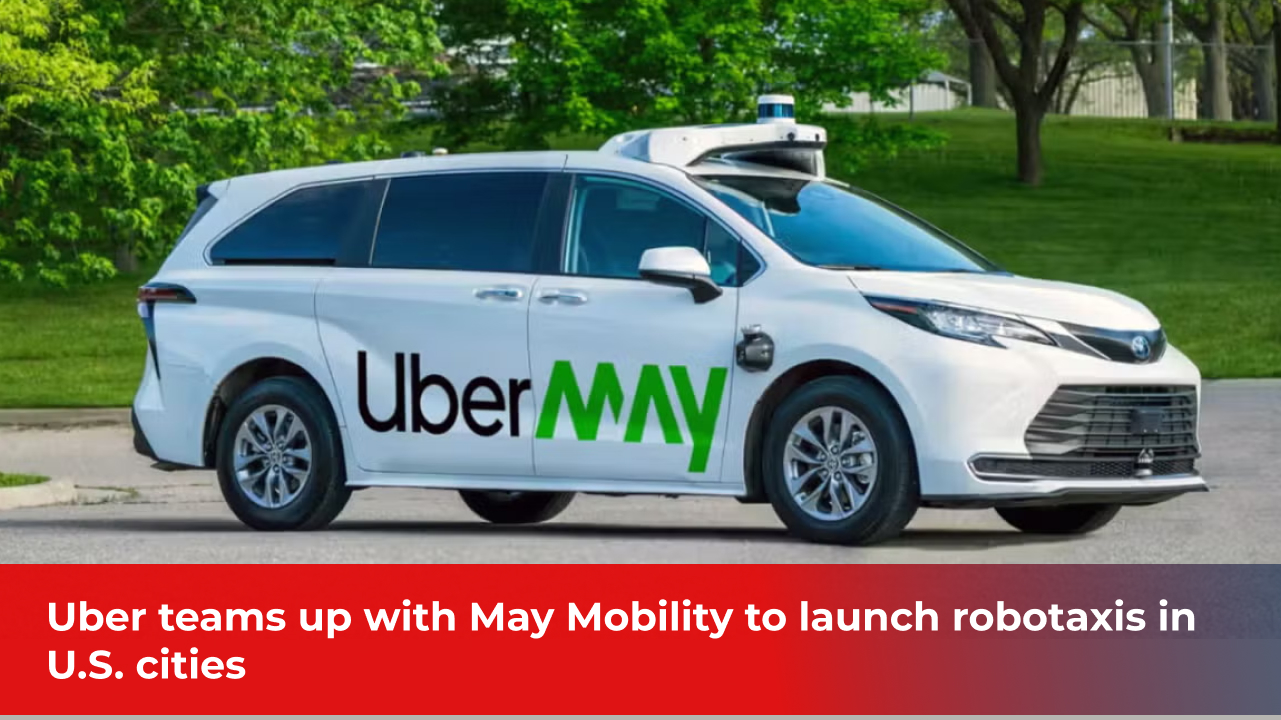Uber Technologies partnered with Michigan-based autonomous vehicle startup May Mobility to deploy thousands of self-driving robotaxis throughout U.S. cities as part of their major urban transportation transformation. Uber disclosed their strategic alliance with May Mobility during the announcement made on May 1, 2025, which will start operations in Arlington, Texas, before the end of this year. The strategic partnership demonstrates Uber's determination to shape the future of transportation while establishing May Mobility as one of the top contenders in autonomous vehicle development.

May Mobility will deploy its autonomous vehicles on Uber’s large-scale rider network through a comprehensive contract which spans several years. May Mobility first introduced its self-driving shuttle services in Arlington in 2021, which serves as its starting point for the upcoming deployment. The companies plan to have their driverless robotaxis operational in the future, but they will start with human safety drivers to achieve regulatory compliance and safety standards. People in Arlington who use Uber will get access to May Mobility vehicles through the Uber app, which will provide them with a preview of autonomous transportation.
Arlington was chosen as a starting point for a few reasons. Limited public transit options in the city create almost a necessity for new mobility options, and May Mobility's success with their autonomous shuttles to the town is a good foundation. The next phase is to spread the program to other cities in the U.S. starting in 2026, and the long-term vision is to see thousands of autonomous vehicles deployed across the country. This era of expansion is set against the background of the federal government being very active in thinning out regulations on autonomous vehicles, including extended safety exemptions to these vehicles and compulsory reporting of incidents. This has engineered an environment conducive to the testing and scaling of such technologies.
For Uber, the partnership constitutes a big step towards setting up the definitive platform for autonomous mobility. After selling its internal autonomous driving group to Aurora Technologies in 2020, Uber has since focused on working with the leading actors in autonomous vehicles, such as Waymo of Alphabet, WeRide of China, Avride, and now May Mobility. Additionally, they have partnered with Volkswagen for the international markets and also with Momenta, a startup in China. Such an approach enables Uber to offer all sorts of autonomous ride options without having to expend enormous amounts on the research and development of its self-driving systems. Through the inclusion of multiple providers into their app, they can serve multiple markets and can also hedge some risk consequent upon dependence on a single technology.
On the flip side, this represents a huge opportunity to scale for May Mobility. Providing autonomous shuttle solutions in confined environments such as campuses, May Mobility has secured over $380 million from Toyota, BMW, and others. The partnership with Uber opens the large customer base to May Mobility and allows them to trial out their technology in more open cityscapes. The hybrid Toyota Sienna minivans are designed to maximise efficiency and passenger comfort and represent a perfect ride-hailing alternative for city travel that is practical and sustainable.
With the robotaxi market blossoming into an increasingly competitive arena, Uber is facing competition from the likes of Lyft and Tesla. On one hand, Lyft is teaming up with May Mobility, which will start operations this year to deploy autonomous taxis in Atlanta, thus putting Uber directly in competition with Lyft in key cities. On the other hand, Tesla unveiled its Cybercab robotaxi concept back in October 2024, with a target for production in 2026 and first deployment for service later this year in Austin. Any Tesla disruption will centre on full self-driving technology, while Uber is securing a timeline by collaborating with more than one provider is exactly what gives it the flexibility and headstart to scale services on the ground.
The partnership between Uber and May Mobility shows great potential but faces various obstacles before reaching success. The development of dependable self-driving technology continues to pose significant engineering obstacles, which include managing dynamic urban spaces along with maintaining secure passenger transportation. The current regulatory environment shows substantial disparities between different cities and states, which demand precise steps to obtain approvals for autonomous vehicle operations. People still hold reservations about self-driving cars because of recent incidents that show additional safety measures must be developed for robotaxi services.
The partnership with May Mobility allows the company to demonstrate its technology at an expanded level. May Mobility stands apart from its competitors by concentrating on controlled spaces instead of busy metropolitan zones, which gives the company time to enhance its systems in tranquil environments. The approach established by the company helped them escape numerous obstacles that their competitors faced, but expanding into high-traffic cities will test their abilities. May Mobility's deployment of hybrid Toyota Sienna minivans brings together passenger comfort with operational efficiency to deliver an effective solution for urban mobility needs.
Uber and May Mobility have established a partnership which marks a significant transition in urban transportation. Robotaxis deliver reduced costs as well as better efficiency and enable driving access for people who lack that ability. Uber uses autonomous vehicles as a fundamental element to achieve its mission of establishing a sustainable and profitable ride-hailing platform. Through this partnership with Uber, May Mobility gets the opportunity to demonstrate its technology on a wider scale while helping self-driving cars gain more public acceptance. The initiative's success during its rollout will be determined by its ability to address technical and regulatory, and social obstacles during the expansion from Arlington to the national level.
The streets of Arlington will soon act as a laboratory for the upcoming generation of transportation systems. If Uber and May Mobility can deliver on their vision, they could reshape how people move in cities, bringing the dream of driverless ride-hailing closer to reality. For now, all eyes are on this partnership as it takes its first steps toward a future where cars drive themselves.
